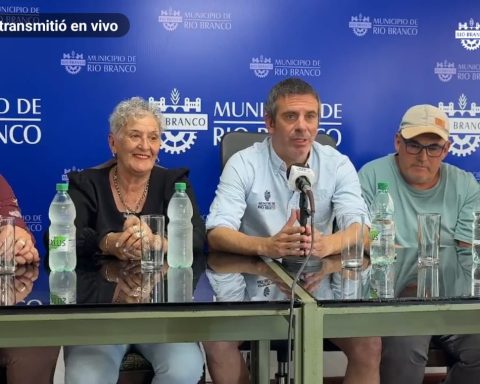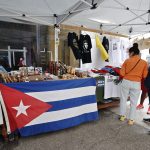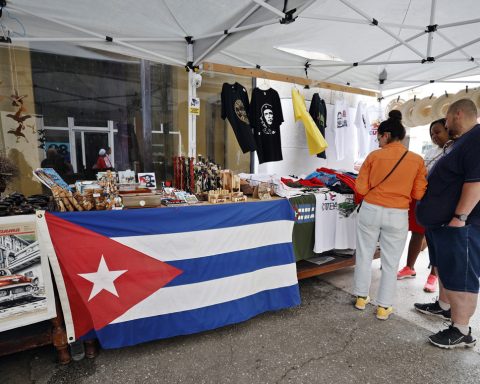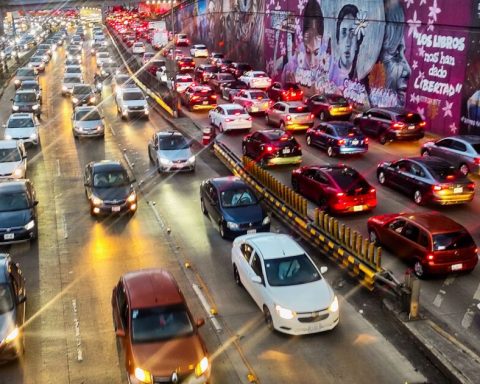December began and, with the last month of the year, the main harvest for merchants for the holidays. The consumption of food, drinks and gifts begins to grow in a situation outlined by the covid-19 pandemic, a war in Europe, an exchange rate difference with Argentina in favor of Uruguayan buyers.
According to the behavior of the internal market in recent weeks, “Expectations (of Uruguayan merchants) have deteriorated a bit”said to The Observer Ana Laura Fernández, advisor to the Chamber of Commerce and Services of Uruguay.
This is not only due to the international context, but also “to the internal market recovery process that has slowed down in recent months,” added the expert.
In this sense, from the union it was indicated that local merchants live a “cautionary scenario” for Christmas, New Year and Epiphany, which is based on “stagnation in sales and, in some areas, relative growth” compared to 2021.
According to the latest survey released by the business association, during the third semester of this year, trade and services had a slight interannual growth of 0.9%. The commerce sector in particular highlighted “the consolidation of a recessive scenario in some items,” reflected the report. Some of them were building materials; hardware and paint stores and personal care.
The prices next door
“The situation of smuggling that we are experiencing with our neighboring countries (Argentina and Brazil) is affecting the commerce sector”, assured Fernández. Concern over this issue is no longer exclusive to merchants in border areas and now concerns the entire country, said the expert. “Should be increase controls and seize the largest amount of merchandise that we know of that enters the country illegally and that is sold on the streets, at fairs, and even in some established stores throughout the country to counteract the unfair competition that affects commerce,” explained Fernández, who fears that this situation will influence the year-end harvest.
The exchange difference with Argentina —whose peso closed at $0.35 this Friday— consolidated as a magnet for Uruguayans, who take advantage of this context to consume and buy products in that country. According to a study by the Catholic University of Uruguay (UCU), on average products in Salto (Uruguay) were 118% more expensive than in Concordia (Argentina) by September 2022. The food and non-alcoholic beverages category, in particular, achieved a price difference of 149%.
Asked about how this situation is lived on the coast, the president of the Salto Industrial and Commercial Center, Vera Facchin, indicated that “a December very complex at the sales level” from the shops in the area. “Salto has not yet found a typical movement of the festivities; and the movement is observed on the exit route towards the neighboring city”, stated the businesswoman.
Given the uncertainty that is being generated, this organization suggests that measures be taken so that the Christmas harvest is not harmed. One of them is to apply a 40% discount from Imesi in fuels in the area. According to the UCU analysis, a liter of super gasoline is 136% more expensive on the Uruguayan sidewhile diesel reaches a difference of 157% and car covers, in particular, are 24% cheaper in Uruguay.
Another of the measures suggested by the organization is that the BROU promote “a massive promotion in the commerce of the coastwith discounts that directly benefit the consumer in the same way that it does with large surfaces or shoppingFachin added.
“Sales that are not made in December cannot be recovered in January or February; and they generate a huge business imbalance that is difficult to recover in the short term”, concluded the businesswoman.
World Factor
Another of the “fronts” —as defined by the adviser to the Chamber of Commerce— that merchants face is the late date in the year in which the soccer World Cup began. According to her vision, the most important harvest of the year runs the risk of being delayed, but not necessarily suffering a negative impact.
The unusual start date of the World Cup in Qatar, which began on November 20, coincides with the two months in which the market is most dynamic while waiting for Christmas. In this context, the business association estimates that the consumption of items linked to the festivities will begin to occur later than in other years due to the sporting event and be “more compact”.
More than 2021, but not enough
According to Fernandez, It is expected that the growth of commercial activity for the end of the year holidays will be “somewhat higher” than in 2021 (in the fourth quarter of last year there was a year-on-year increase of 5.9%), although it will not meet the expectations that local businessmen initially had a few months ago.
The economist Alejandro Cavallo (Equipos Consultores), agreed regarding the behavior of consumption by the end of 2022. In this sense, the expert explained that “the proportion of consumers who plan to spend less or participate in less during these holidays has been reduced appreciably.” celebration activities compared to last year (from 52% to 39%)”.
This suggests that “consumers have a somewhat better spending attitude than last year, although they maintain restrictions or limitations associated with shock adverse of the second trimester”Cavallo concluded.

















